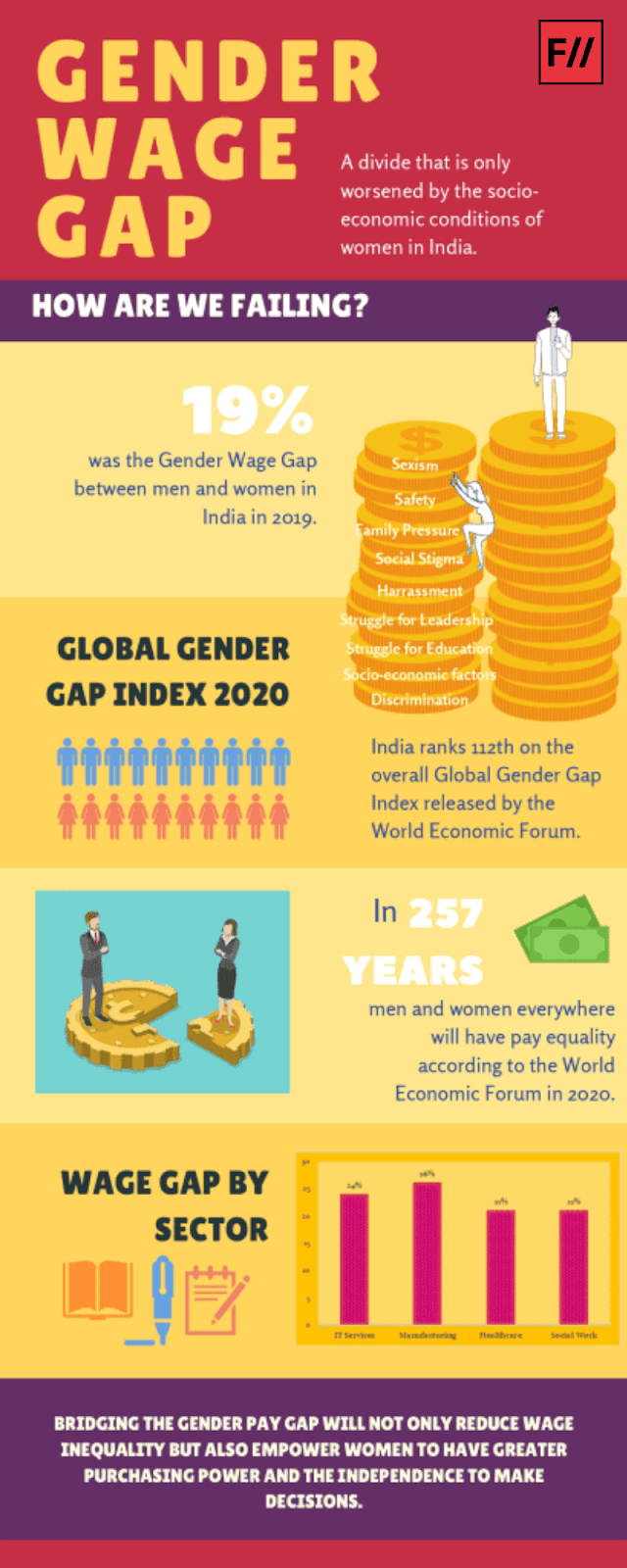It may seem like an exception, but there is a gender pay gap in which a woman is paid less than a male even when both perform the same job in an organization. Nonetheless, it is so commonplace that it is more or less the global norm. Around the world, women are typically paid 20% less than men, according to an ILO report.
A corporate phenomenon that is so pervasive but invisible could very well be the best-kept secret. Now, Australia will know about that secret. Now everyone in Australia is aware of which company pays its female employees how much less than it does its male employees. Australia recently enacted legislation requiring businesses with more than 100 employees to disclose what is now known as the gender pay gap. The Australian government expects that naming and shaming would push businesses to act and shut down.

Image Source: Feminism in India
Table of Contents
Gender pay gap analysis in India
As women move up the organizational hierarchy, the gender pay gap between men and women employees in India widens, reflecting the fact that women are paid less at every stage of their careers than males. An IIM-Ahmedabad study from last year showed that the survey found that while the pay disparity between men and women in equivalent occupations at the individual contributor level is only 2.2%, it expands to 3.1% for managers/supervisors and 4.9–6.1% for directors and senior executives.
Around 4,000 senior executives comprised the sample size for the study, which was based on answers from 109 NSE businesses. The gender pay gap can differ significantly between industries and businesses. Yet according to the report, senior women professionals in India only make on average Rs 85 compared to Rs 100 for men in the same position.
Reasons for the gender pay gap in India

source: economic times
- Occupational segregation: Men are more likely to work in higher-paying professions like engineering and finance, while women are more likely to work in lower-paying industries and jobs like education and healthcare.
- Discrimination: Despite the existence of laws prohibiting discrimination based on a person’s gender, choices on pay, promotions, and employment can nevertheless be influenced by conscious or unconscious bias.
- Motherhood penalty: Women with children may experience lower salaries and fewer prospects for progress since it is frequently expected that they will be less dedicated to their work or may be the target of prejudice because of their caregiving responsibilities.
- Negotiate: Women are frequently less inclined to negotiate their initial rates or request raises, which might eventually result in lower compensation.
- The difference in work experience and education: Women may take time off or work part-time to care for children or other family members, which can result in less job experience and lower pay over time. Variations in work experience and education. In addition, gender stereotypes and other societal factors may discourage women from entering higher-paying professions.
Measures that can be taken to address the gender pay gap
The gender wage gap in India is being addressed in a variety of ways. The Equal Remuneration Act, which requires equal compensation for men and women doing the same work, is one of several policies and initiatives the government has enacted. The National Strategy for Skill Development and Entrepreneurship, which aims to give women training and job possibilities in numerous industries, has also been introduced by the government.
Several businesses have also developed strategies to alleviate the pay gap, including pay transparency, flexible work schedules, and diversity and inclusion initiatives. To ensure that women are compensated equally for equivalent work, more has to be done, including bolstering enforcement measures and tackling social norms and gender stereotypes contributing to the pay discrepancy.













